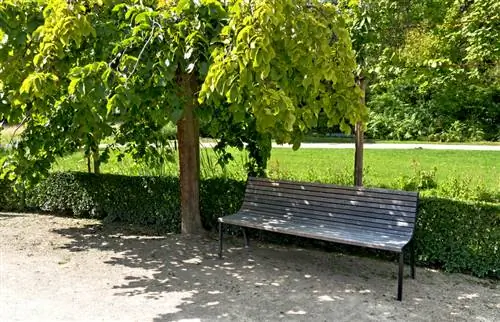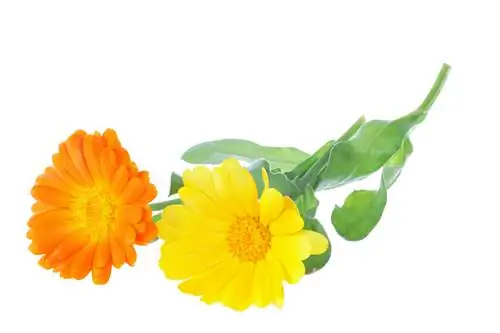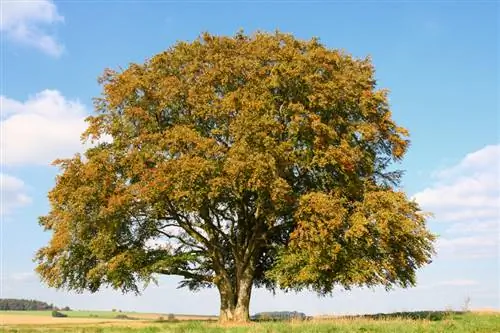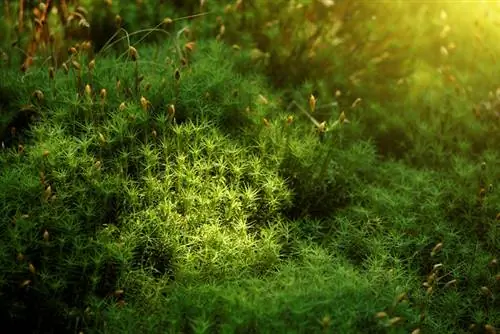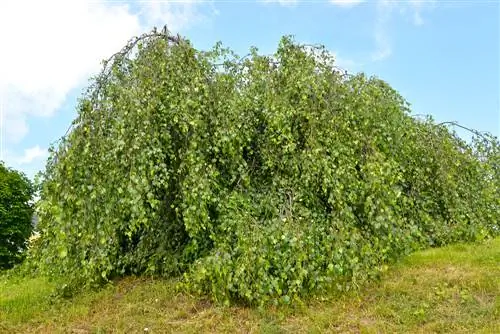- Author admin [email protected].
- Public 2023-12-16 16:46.
- Last modified 2025-01-23 11:20.
The widespread silver birch (sometimes spelled silver birch) is a fast-growing, very undemanding tree with numerous possible uses.
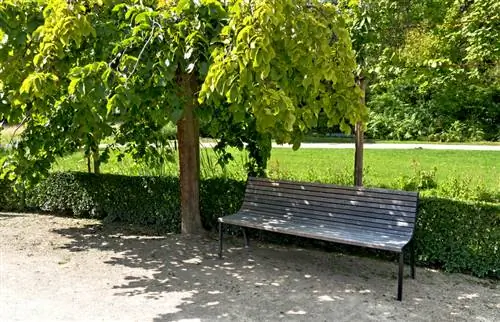
What is a profile for the silver birch?
The silver birch (Betula pendula) is an undemanding, fast-growing deciduous tree native to Central Europe. It reaches heights of 10 to 25 meters and has a characteristic white bark with black cracks. Its egg-shaped foliage takes on a golden yellow color in autumn.
Betula pendula briefly and concisely at a glance
- Botanical name: Betula pendula
- Other names: white birch, sand birch, warty birch
- Genus: Birch trees (Betula)
- Family: Birch family (Betulaceae)
- Tree type: deciduous tree
- Origin and distribution: Central Europe
- Location: sunny to light partial shade
- Soil: sandy to loamy, acidic to slightly alkaline
- Growth height: between 10 and 25 meters
- Growth habit: slender, upright tree
- Leaf: egg-shaped with serrated edges
- Autumn color: golden yellow
- Flower: yellow
- Flowering time: March to April
- Fruit: hanging nut fruit
- Bark: white with black cracks
- Root: Shallow-rooted
- Propagation: preferably via seeds
- Use and use: native tree, ornamental tree, commercial tree (wood, fruits, etc.)
- Toxicity: no
Species and distribution
The fast-growing and undemanding silver birch is a real pioneer that colonizes bare areas in no time thanks to its rapid growth. This native deciduous tree is relatively unaffected by the nature of the soil and subsoil, the main thing is that the location is bright and sunny. Silver birch trees grow almost everywhere, even where other plants would no longer thrive. However, the tree is not particularly long-lived; it ends after around 90 to 120 years of life. There are some very interesting cultivars for the home garden, some of which are also suitable for areas with little space:
- Blood birch (Betula pendula Purpurea): height between seven and nine meters, dark red leaves
- Weeping birch (Betula pendula Youngii): height between four and eight meters, overhanging branches
- Fern-leaved birch (Betula pendula Dalecarlica): height between eight and ten meters, columnar growth
- Columnar birch (Betula pendula Fastigiata): very slender growth, up to ten meters high
- Golden birch (Betula pendula Golden Cloud): growth height up to eight meters, golden yellow foliage
Appearance and special features
Weeping birches can be easily recognized by their white, black-furrowed trunk. However, the purpose of this unusual bark color is little known, because thanks to it, birch trees can regulate the temperature and protect themselves from inhospitable temperatures. As a result, silver birch trees are very hardy and can survive late frosts in spring without any damage. The widespread tree is not particularly popular with allergy sufferers, but its uses are varied. The very light birch wood is primarily used to make furniture, while birch sap and water are used in cosmetics, cooking and herbal medicine.
Tip
Traditionally, the birch sap obtained in spring is not only drunk or used as a sweetener, but also transformed into birch wine through fermentation.

